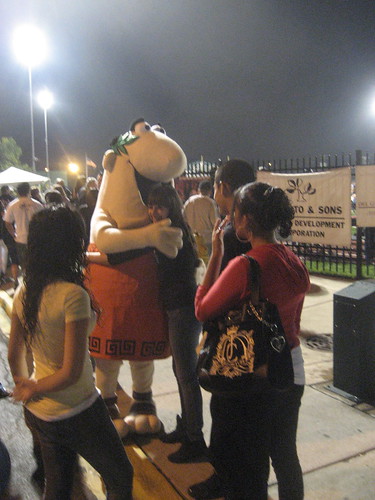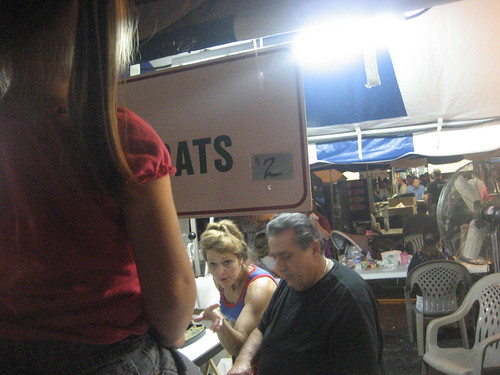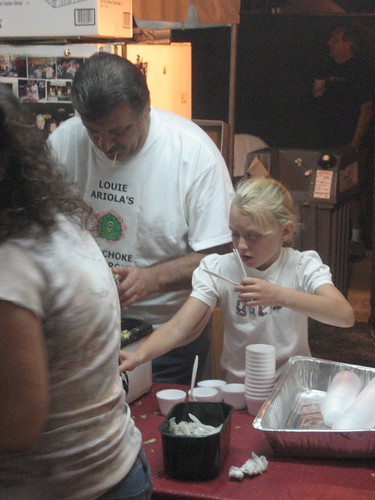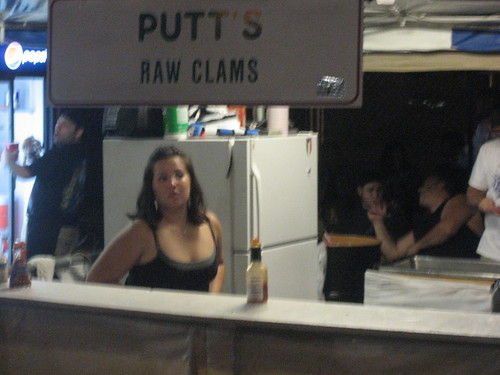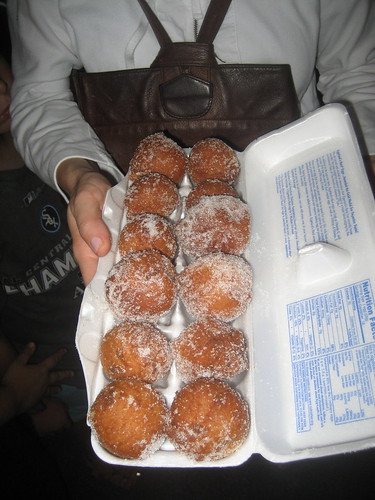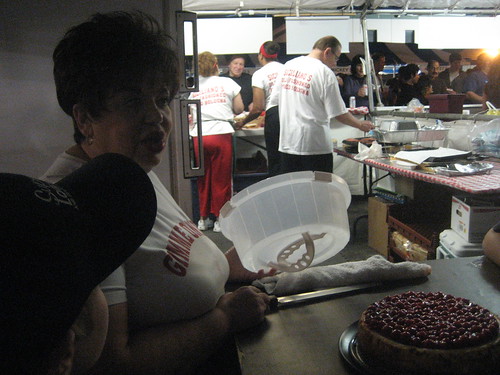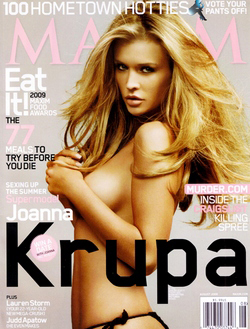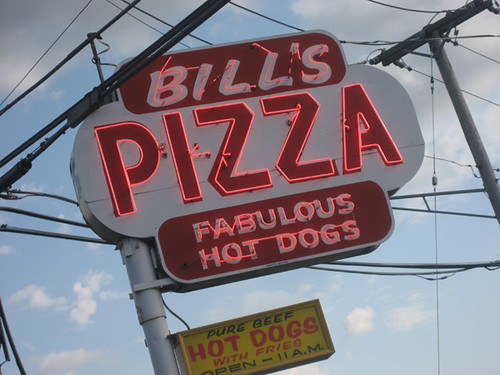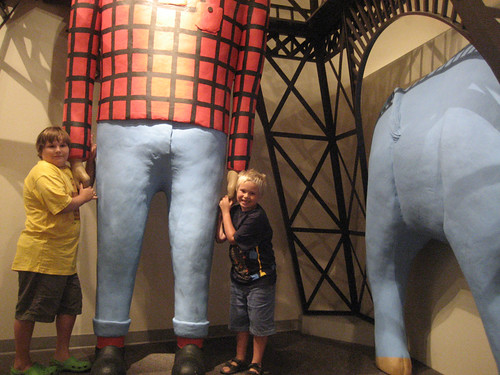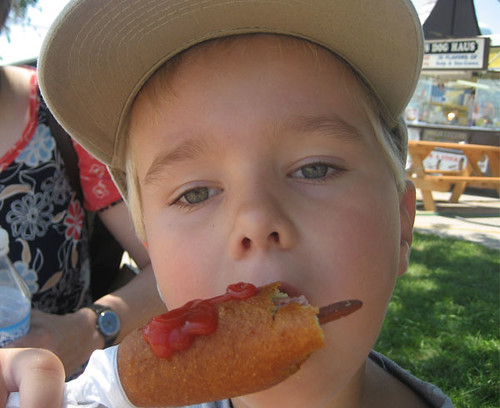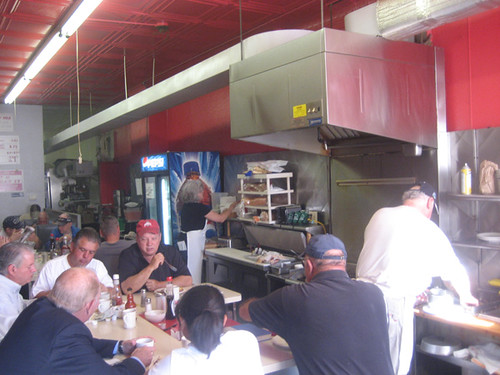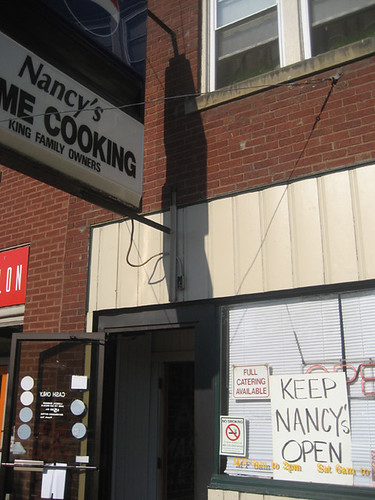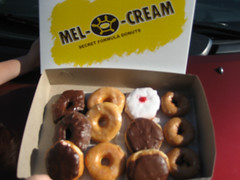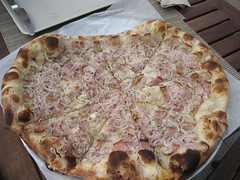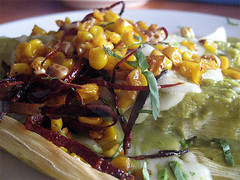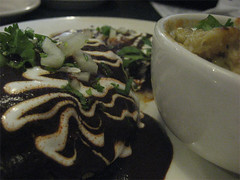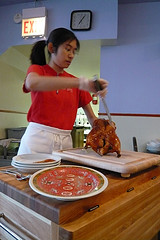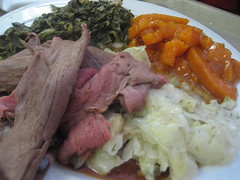
My head was still swimming with fish from the new Sky Full of Bacon podcast (that was a direct link to it, by the way, that will skip you past the ten zillion pierogi pics to follow), from the frenzy in which I shot the last interview on Tuesday, finished editing Tuesday night, watched it the next morning and wasn’t happy, restructured it completely and rewrote and rerecorded the voiceover on Wednesday, and posted it Thursday morning. It was done, I needed to forget it and move on, I needed new adventures. In short, I needed the Pierogi Fest in Whiting, Indiana.

Chicagoans tend to have a pretty dire notion of northwest Indiana but, as I knew from a visit last summer, Whiting is a proud and tidy little town, full of cute little houses with perfect square lawns and flowerbeds and, during Pierogi Fest at least, flying the Slovakian flag. And, it seemed clear, a cheerful sense of the absurdity of a festival devoted to dumplings.
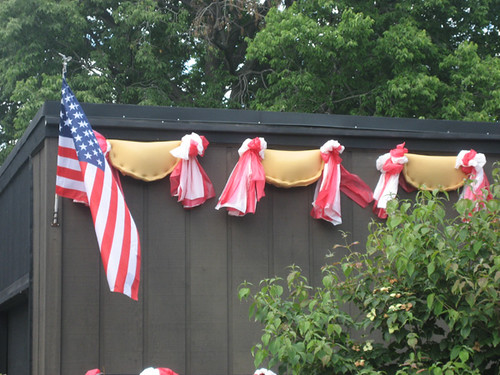
Knowing her to be the source on small town food events, I called Cathy2 beforehand. She warned me that during the Friday night parade and lawn mower drill team performance, Pierogi Fest could be packed beyond one’s tolerance for crowds; she felt it had become more of a tourist event than an organic local festival. Well, I couldn’t go Friday night anyway, so I aimed for what I hoped would be a midafternoon lull on Saturday.

Timing was pretty perfect, actually; the ice cream and root beer stands had long lines but the pierogi stands were fairly quiet.
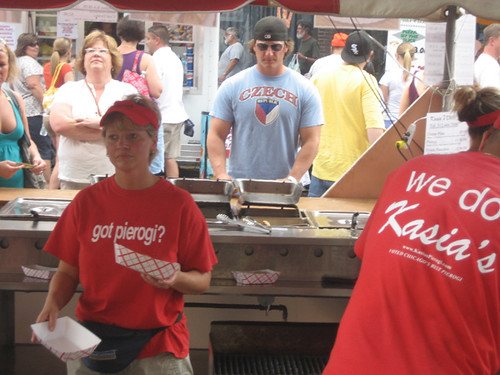
The fest stretches through four or five long blocks of Whiting’s picturesque main street (119th), with probably 8 or 10 pierogi stands as well as a variety of other refreshments and assorted local vendors of the sort you see at any street fest, everything from tchotchke sellers to tarot readers to a National Guard recruiter, as well as a stage area devoted to folk dancing and music.

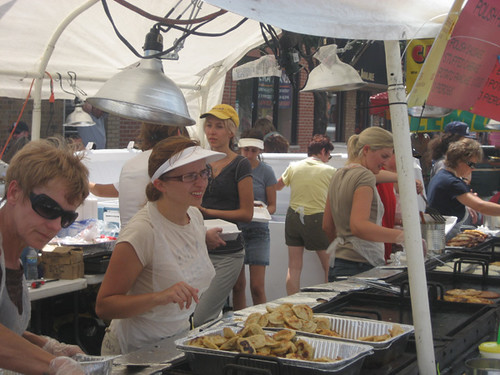
Clearly there were going to be more pierogi than I could take in on one trip. I needed a strategy, and so skipped the first couple of vendors in favor of a name I recognized:
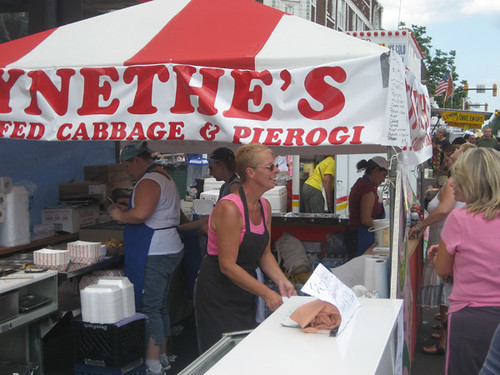
Lynethe’s, on 119th just a few blocks east of here, is well known as one of the best spots for pierogi, especially since John Kass wrote about it a few years back. Ironically it’s actually run by a Latino who had worked for the previous Eastern European owner, but it remains a pillar of the Whiting pierogi scene and was doing some busy frying even during this lull time:

So I figured Lynethe’s would be a good choice for a control, especially since I’ve cooked them at home (and still have some in my freezer from last summer). I ordered a sauerkraut one and a potato with cheese:

Lynethe’s belongs to the fried-crisp school of pierogiology. The sauerkraut I liked a lot, the potato oozed way too much orange cheddar, like Cheez Whiz Pierogis, I wanted just a note of tart bryndza-type cheese like they have at Smak Tak. Still, a good baseline for what would follow.
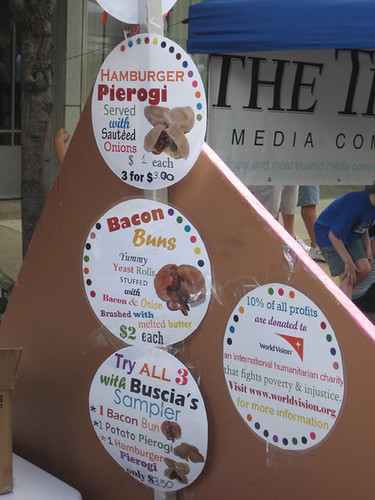
Buscia’s is a non-restaurant vendor cooking up pierogi in an assortment of 50s-style electric pans. They are apparently there to represent Whiting’s transgender community:
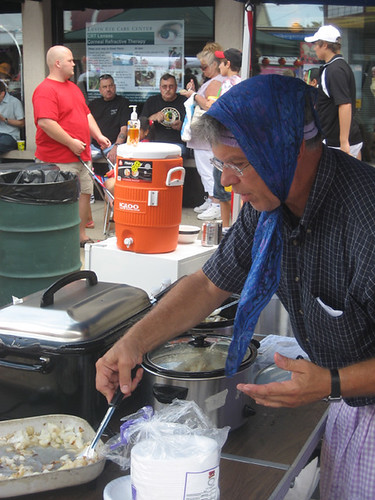
Seriously, I was totally drawn in by the promise of bacon buns in a combo, so I ordered the combo. The pierogi were a little mushy and just so-so; hamburger forgettable, potato decidedly better:

The bacon bun could stand to learn a thing or two about being lighter and fluffier, it was pretty much artillery standard, but it had great bacony flavor and was one of the best things I tried.
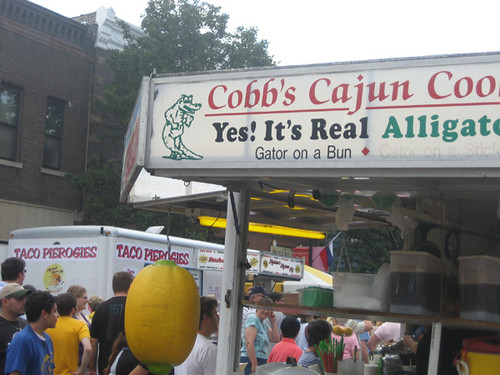
I walked past other, more improbable food vendors…
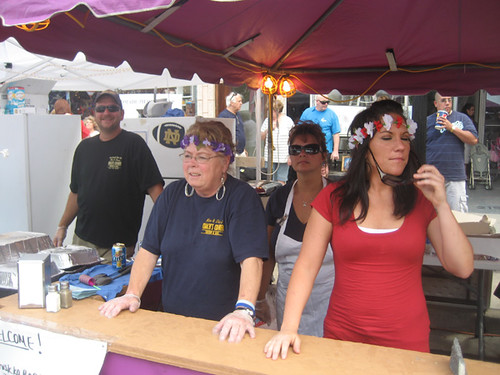
But this bunch, from a bar called Coach’s Corner, lured me in with some quick-witted banter and infectious enthusiasm. They were serving “chevaps,” which is to say cevapcici, ground meat sausages freshly grilled, and despite hardly thinking that I needed the minimum order of five, I tried them.
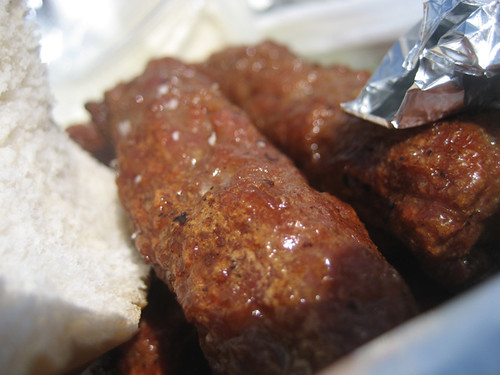
“You take pictures of your food before you eat it?” one of them asked.
“Well, you don’t want to take pictures of it after you eat it,” I said.
These were great, and I loved the simple butter-cream cheese stuff that came on the side. I’m definitely going to have to go back and give Coach’s Corner, 6208 Kennedy Ave. in Hammond, a try.
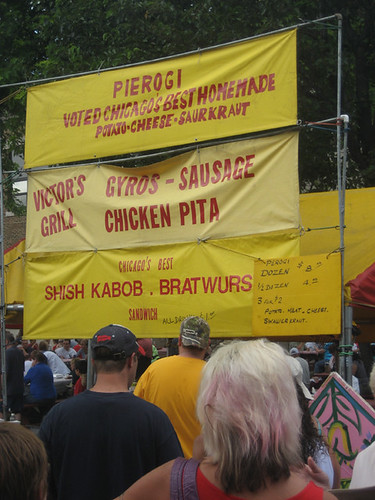
I haven’t been able to track down Victor’s Grill, if it’s a standing restaurant, and it may just be another homemade spot, but it looked promising, so I stood in its line for a few minutes (business was starting to pick up as lunch was digested).
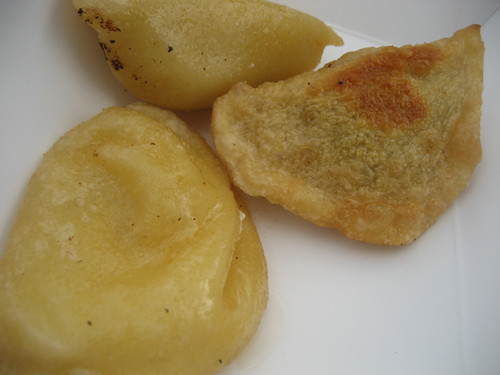
These were kind of heavy, wrapping-wise, but the fillings were pretty good.
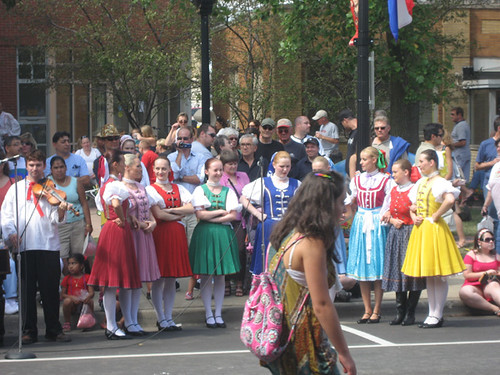
I wandered some more past the stage area and reached the block with the beer garden in it. Although business had picked up a little at other stands by now, I wasn’t prepared for the line at Dan’s, which stretched down the street and around the picnic tables:

What accounted for this wild popularity? Did everyone know that Dan’s was the place, or was this one of those psychological things where a line attracts more line because, hey, if there’s a line, it must be good?

I heard someone ask these very questions of someone ahead of me and the answer came back, “This is the only place where they’re not frozen. They’re totally fresh.” Well… I’m not convinced that that was the reason, because I’m not convinced you can tell the difference, frankly. Still, it wasn’t like I was too hungry to spend 15 minutes in line, so I did.
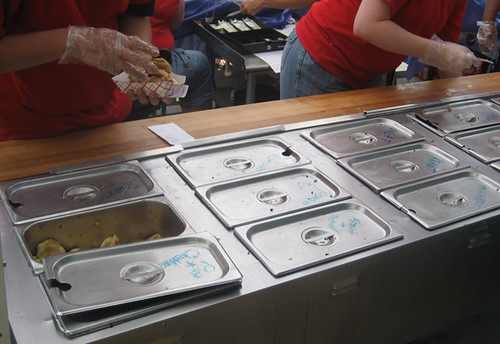
It is an impressive operation, a dozen bins filled with a dozen flavors, certainly the widest choice here by a comfortable margin.
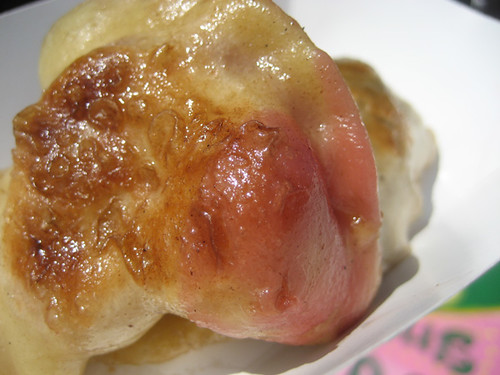
I tried cabbage, sauerkraut and mushroom, and cherry (which squirted hot cherry juice all over me as I bit into it). The wrappers were a little rubbery from the holding method, but the fillings were outstanding, it wasn’t hard to see why this place was popular. As I picked up my order, I heard someone say that the spinach were the best, so now I have a reason to go back next year.

I’m often disappointed by Chicago’s small street fests because it seems like the same vendors are there at each one dishing up the same pork skewers. Pierogi Fest, though it had some commercial catering ringers, clearly draws real local cooks and earns a lot of local support as a result. I loved it, the small town feel, the enthusiastic goofiness of pierogimania, the women who clearly should not have been wearing “Hey, Nice Pierogies!” T-shirts yet did so anyway, everything. It’s a great Chicago-area event and well worth checking out on a sunny Saturday afternoon, the perfect day for it.


 Posted in
Posted in 
